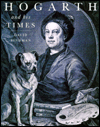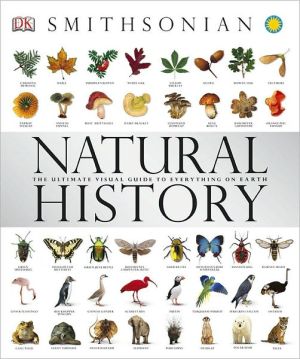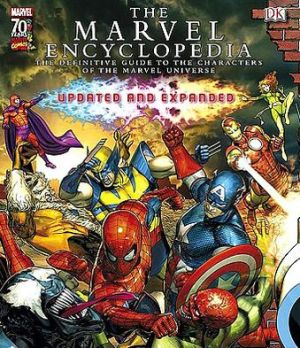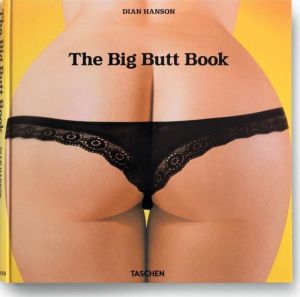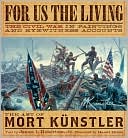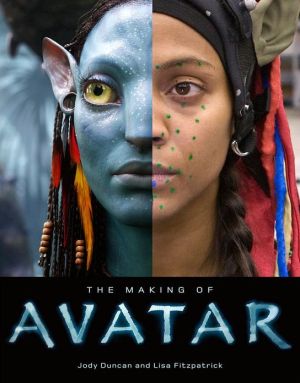Hogarth and His Times
The reputation of William Hogarth (1697-1764) rests largely on his pictorial stories, a series of engravings that he called "modern Moral Subjects," the most famous being the Harlot's and the Rake's Progress.\ In this catalog, David Bindman works backward from Hogarth's reputation today—where he is seen by some as a conservative populist and by others as a political radical—and examines his impact on various artists over the past three centuries. Bindman also sets Hogarth's prints firmly in...
Search in google:
The reputation of William Hogarth (1697-1764) rests largely on his pictorial stories, a series of engravings that he called "modern Moral Subjects," the most famous being the Harlot's and the Rake's Progress. In this catalog, David Bindman works backward from Hogarth's reputation today—where he is seen by some as a conservative populist and by others as a political radical—and examines his impact on various artists over the past three centuries. Bindman also sets Hogarth's prints firmly in their historical context, discussing the artist's public and the different influences on his work, from Roman satire to the politics of the day. The result is an engaging and insightful portrayal not only of William Hogarth, but also of the middle years of the eighteenth century. Art lovers will enjoy this book, but so too will anyone with an interest in the literature and history of the mid-eighteenth century.Publishers WeeklyIt is hard to imagine a more tempting subject for a biography than William Hogarth (1697-1764), a man whose life was so knotted up in the tangled issues of his time. His personal involvement in the new Foundling Hospital, in questions of copyright and the academy, allow Uglow (Elizabeth Gaskell) to reflect on social, philosophical and even commercial issues of the day. But it is mostly in her detailed and engrossing examination of the contexts and contents of Hogarth's work, particularly of his satires and his seriesA Rake's Progress, A Harlot's Progress, Marriage la Modethat Uglow elucidates Hogarth's life and Georgian society. Having trained as an engraver, Hogarth had roots in an art that was timely and popular. In many ways, Hogarth had more in common with friends like Henry Fielding, David Garrick and Laurence Sterne than with colleagues in the visual arts. In his sharp awareness of human frailty, he is very much a descendant of Swift; he even continues Swift's Battle of the Books, in a different mediumand on the side of the moderns. When many painters were aping anything Italian, particularly heroic history paintings, Hogarth was resolutely contemporary and English. As Uglow points out, "any fool could tell a pious tale, but true `morals' were inseparable from mores, the way people lived in their wild and glorious and dirty detail." It is this detail that Uglow brings to her portrait of the caustic, nave, vain, witty, generous Hogarth, and to his equally complicated times. 200 b&w illustrations, 14 color plates. British, translation, dramatic rights: Faber & Faber. (Nov.) FYI: In November, Yale will publish a new edition of Hogarth's The Analysis of Beauty. ($30 200p ISBN 0-300-07335-6; $15 paper -07346-1); in December, Univ. of California will publish an exhibition catalogue called Hogarth and His Times by David Bindman. 170 b&w illustrations, 6 color plates. ($45 208p ISBN 0-520-21299-1; $29.95 -21300-9)
Foreword7Preface9Introduction1Whose Hogarth?112Hogarth's Public: Finding An Audience293Politeness and Roman Satire334Hogarth and 'The Spirit of Party'415Disenchantment: Hogarth, God and Science51AppHogarthomania and the Collecting of Hogarth58Notes61CatalogueRedefining Hogarth: Twentieth to Eighteenth Centuries64The Satirical Engraver and His Public84The Targets of Satire: The Orders of Society104The Political Stage148Intellectual Warfare: The Analysis of Beauty and Its Reception168Last Battles182Chronology202Bibliography204Index of Persons206Index of Hogarth's Works Illustrated208
\ Publishers Weekly\ - Publisher's Weekly\ It is hard to imagine a more tempting subject for a biography than William Hogarth (1697-1764), a man whose life was so knotted up in the tangled issues of his time. His personal involvement in the new Foundling Hospital, in questions of copyright and the academy, allow Uglow (Elizabeth Gaskell) to reflect on social, philosophical and even commercial issues of the day. But it is mostly in her detailed and engrossing examination of the contexts and contents of Hogarth's work, particularly of his satires and his seriesA Rake's Progress, A Harlot's Progress, Marriage la Modethat Uglow elucidates Hogarth's life and Georgian society. Having trained as an engraver, Hogarth had roots in an art that was timely and popular. In many ways, Hogarth had more in common with friends like Henry Fielding, David Garrick and Laurence Sterne than with colleagues in the visual arts. In his sharp awareness of human frailty, he is very much a descendant of Swift; he even continues Swift's Battle of the Books, in a different mediumand on the side of the moderns. When many painters were aping anything Italian, particularly heroic history paintings, Hogarth was resolutely contemporary and English. As Uglow points out, "any fool could tell a pious tale, but true `morals' were inseparable from mores, the way people lived in their wild and glorious and dirty detail." It is this detail that Uglow brings to her portrait of the caustic, nave, vain, witty, generous Hogarth, and to his equally complicated times. 200 b&w illustrations, 14 color plates. British, translation, dramatic rights: Faber & Faber. (Nov.) FYI: In November, Yale will publish a new edition of Hogarth's The Analysis of Beauty. ($30 200p ISBN 0-300-07335-6; $15 paper -07346-1); in December, Univ. of California will publish an exhibition catalogue called Hogarth and His Times by David Bindman. 170 b&w illustrations, 6 color plates. ($45 208p ISBN 0-520-21299-1; $29.95 -21300-9)\ \
